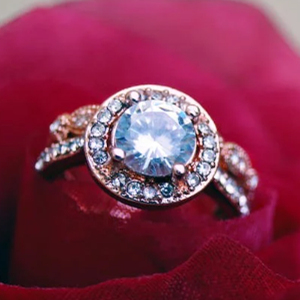
With natural diamond supplies becoming increasingly constrained, the lab-grown diamond industry is emerging as a promising alternative. Natural diamonds take billions of years to form, and their extraction is essentially non-renewable.
In contrast, lab-grown diamonds can be cultivated in a matter of weeks within a controlled laboratory environment. As the supply of natural diamonds dwindles and the demand for diamonds continues to rise, lab-grown diamonds are gaining recognition as an ideal substitute. Their market penetration is steadily increasing, driven by the advantages of affordability and ethical sourcing. Consequently, the industry is witnessing a surge in demand and prosperity.
Gradual Dependence on Man-Made Diamonds
The global natural diamond extraction has historically been concentrated in the hands of a few mining giants, leading to limited market output. Natural diamond production increases at a slow pace annually, intensifying the reliance on man-made diamonds. With the recognition of lab-grown diamonds by authoritative bodies and their growing acceptance among consumers, many jewelry companies are strategically diversifying into the wholesale lab grown diamond business.
They capitalize on the quality and price advantages offered by lab-grown diamonds, catering to the fashion-conscious and younger consumer segments. Moreover, lab-grown diamonds are not confined to the consumer jewelry market; their application is expanding into various high-tech sectors, promising substantial and diverse future market demand. As new players enter the lab-grown diamond industry, established companies are actively expanding their production capacities. Scaling up is an inevitable trend for the lab-grown diamond industry's future.
High Demand and Low Supply of Lab-Grown Diamonds
From both an industrial and jewelry perspective, lab-grown diamonds serve as the most viable alternative to natural diamonds in the diamond industry. The time required for natural diamond formation spans billions of years, and natural diamonds are almost non-renewable after extraction. In contrast, lab-grown diamonds can be cultivated within a matter of weeks in a controlled laboratory environment. As a result, the increasing scarcity of natural diamonds and the growing demand for diamonds have made lab-grown diamonds a widely accepted alternative. Their market penetration has been on the rise, further accelerated by the recognition of lab-grown diamonds by diamond authorities. Consequently, the consumer market's demand for lab-grown diamonds is rapidly increasing, driving a steep rise in production volume.
Enormous Growth Potential
China's production of superhard materials accounts for over 90% of the global total, offering substantial growth opportunities for the upstream of the lab-grown diamond industry chain. With its extensive development space, the lab-grown diamond industry is experiencing robust growth. Lab-grown diamonds, also known as synthetic diamonds, are produced through specific techniques in a laboratory setting. The main synthesis methods include the high-temperature high-pressure method and chemical vapor deposition.
The former simulates the high-temperature and high-pressure conditions under which natural diamonds grow, prompting graphite powder to convert into diamonds with the assistance of metal catalyst powder. The chemical vapor deposition method uses microwave beams to generate a plasma of carbon, depositing individual carbon atoms onto diamond seed crystals to create lab-grown diamond roughs. This method reduces the temperature and pressure requirements for diamond growth, resulting in higher purity products. Compared to global standards, China's lab-grown diamond industry is still in its early stages, with the high-temperature high-pressure method being the primary approach. These diamonds are primarily tabular and grow rapidly, offering good color but slightly lower purity. Nevertheless, they hold a competitive edge in terms of overall cost-effectiveness.
Continuous Advancements in Lab-Grown Diamond Technology
As the market evolves, lab-grown diamond synthesis technologies are continuously improving. Lab-grown diamonds are becoming increasingly prevalent due to their pronounced advantages and growing consumer acceptance.
They are now considered the best alternative to natural diamonds and are applied in various industries. Lab-grown diamonds differ from natural diamonds in their production process and scarcity. Lab-grown diamonds are cultivated in a controlled laboratory environment, whereas natural diamonds take billions of years to form. Furthermore, natural diamonds are a finite resource, making them scarce. In contrast, lab-grown diamonds are a more sustainable and affordable choice. As the lab-grown diamond market continues to grow, it will gradually cover natural diamond markets.
The wholesale lab-grown diamond market is undergoing significant transformations, and understanding its future is vital for both consumers and the jewelry industry. In this article, we'll explore the trends and developments that are shaping the future of lab-grown diamonds.
Growing Demand:
The demand for lab-grown diamonds is on the rise, driven by factors such as ethical sourcing, sustainability, and budget-consciousness. This increasing consumer interest is expected to fuel the market's growth.
Expanding Variety:
As technology advances, lab-grown diamonds are becoming available in a more extensive range of sizes, shapes, and colors. Consumers will have even more choices in the future when it comes to selecting the perfect lab-grown diamond for their jewelry.
Advancements in Quality:
The quality of lab-grown diamonds continues to improve. Innovations in production techniques result in diamonds with enhanced brilliance and clarity, making them even more appealing.
Industry Transparency:
Transparency regarding the sourcing, production, and pricing of lab-grown diamonds is a priority. This commitment to transparency builds trust among consumers and fosters the growth of the market.
Market Competition:
With the growth of the lab-grown diamond market, competition among manufacturers and retailers is increasing. This competition is likely to drive innovation and lead to competitive pricing.
Consumer Education:
As consumers become more informed about lab-grown diamonds, they can make choices that align with their values and preferences. Education about the benefits of lab-grown diamonds will continue to play a crucial role.
The future of the wholesale lab-grown diamond market is promising, marked by growing demand, expanding variety, improved quality, increased transparency, market competition, and consumer education. These trends are reshaping the jewelry industry and offering consumers more choices and ethical alternatives.










